On August 6, 1945, the world changed forever. On this day, the United States would become the first and only nation to utilize the atomic bomb, a new weapon of no longer mass destruction, but instead of total world destruction that could be used at any given time. Now, nearly 77 years after Hiroshima and Nagasaki, most of us only ever consider what would happen if nuclear weapons were actively used within the context of war again, yet we continuously fail to recognize that the use of nuclear weapons hasn’t ceased since their creation in the 1940s.
Cara Despain, a Miami-based artist, cannot forget this muted past of the use of nuclear weapons, and she is using her art to uncover and expose the secrecy behind the United States’ constant development and testing of nuclear weapons on home soil. A Utah native, Cara Despain is no stranger to the negative effects of nuclear weapons and testing, as “for years, the federal government conducted nuclear tests in Utah’s backyard,” which has forced locals like Despain to constantly contemplate how the continuous development of highly advanced nuclear arsenals always comes with collateral damage for those living around testing sites, something that a majority of the world never has to think about.
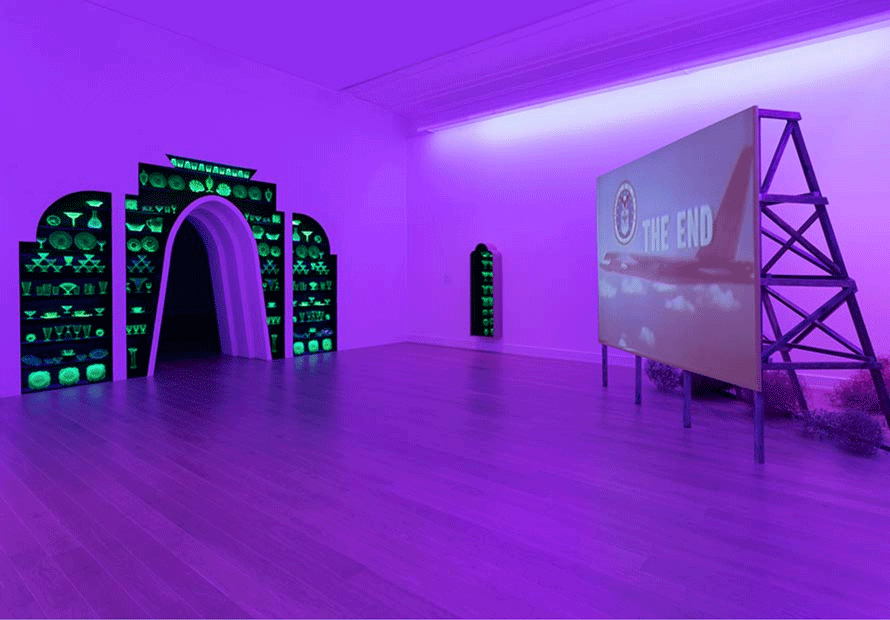
Aiming to uncover this obscure history and expose the damage that the American government has imposed on its own citizens, Cara Despain launched Specter, a solo exhibit at the Bass Museum of Art in Miami Beach. Featuring just five pieces, Specter showcases everything from declassified archive films of nuclear testing to mass produced depression era glass dishware that contain uranium oxide, all of which illuminate the hidden development of domestic nuclear testing in the United States.
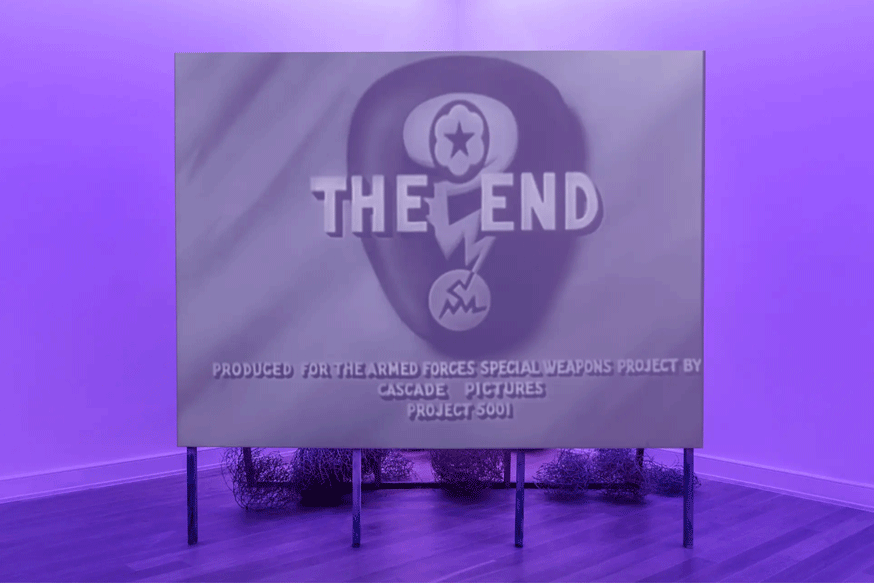
The Specter exhibit begins with House of Cards, a cinematic loop of end title cards paired with informational and propagandistic films, in which viewers are able to witness contradictory messaging from the U.S. government, which educated the public on the dangers of nuclear fallout, while at the same time emphasizing the importance of continuing to develop advanced nuclear technology. House of Cards, although extremely ominous, is only the beginning of Despain’s journey into the untold truth of nuclear testing in the U.S.
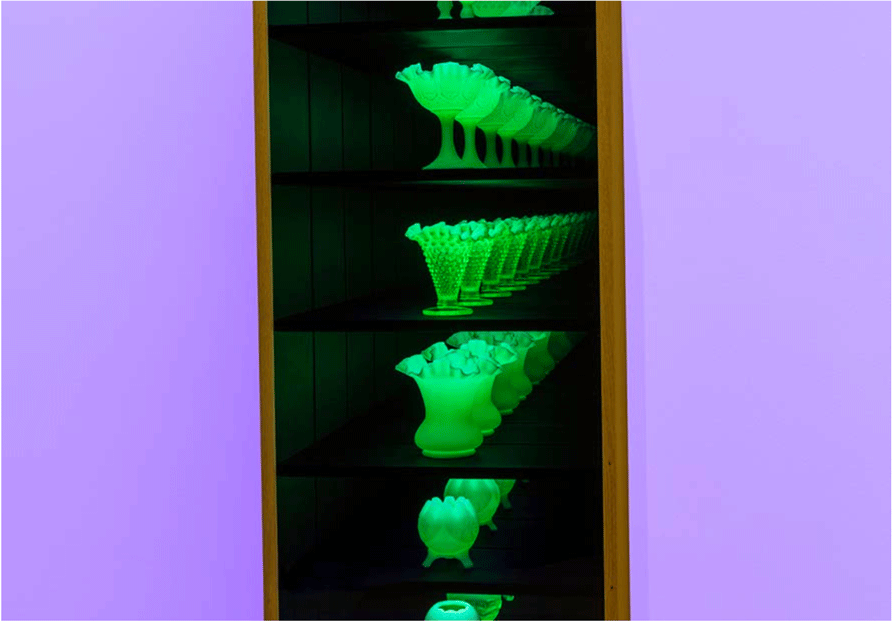
One of the centerpieces of the Specter exhibit is Under the Rainbow, a set of curio-cabinets filled with mass produced glass dishware from the Depression Era, all of which shine bright green under UV lights, a result of the presence of uranium oxide within the colourant of the dishes. This is where Despain’s history shines through her art. In being one of the many generations within her family to have grown up in the fallout region of the U.S. government’s nuclear testing, Despain utilizes these “nuclear dishes'' to highlight that the U.S government has hidden exactly how and where nuclear technology has been utilized since its creation, and how “regular families, who were just living their lives” had to face nuclear-related atrocities at the hands of their own government .
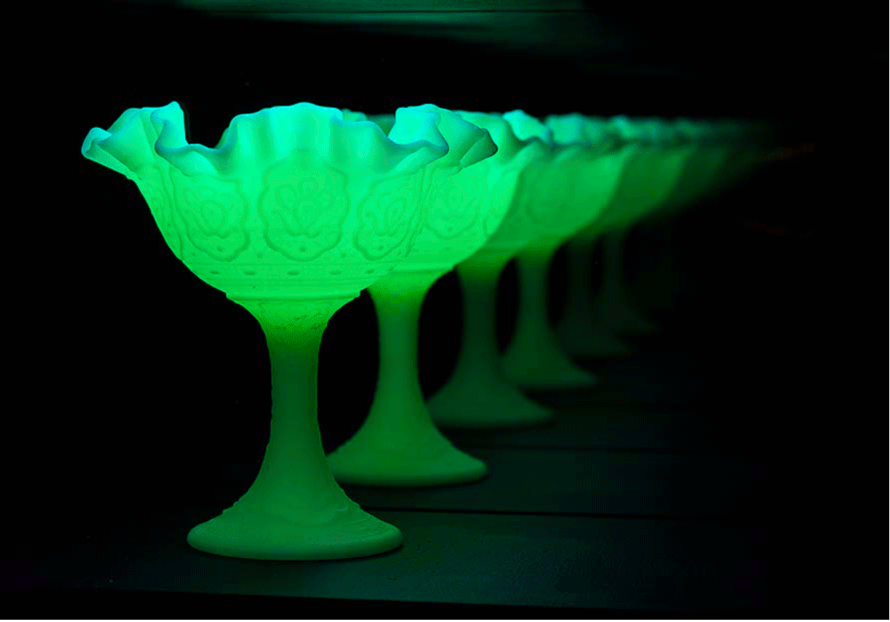
Experiencing this first-hand, Despain hopes to get across to the public through her dishware installation that “for decades, nobody believed the people in that area—some of which I descended from—nobody believed they were getting sick or dying, or that they were seeing burns on their animals, or that their milk was irradiated. For decades, they were gaslit by the government.”
Through this installation, Despain provides both herself and those from fallout regions an outlet to express their grievances with the secrecy of the U.S. government’s nuclear testing and expose the pain that they have endured as a result. More importantly, Despain’s art gives those negatively impacted by nuclear technology, a space to advocate for the United Nations Sustainable Development Goal for Sustainable Cities and Communities, which forces national governments to recognize their wrong doing, listen to the voices of those affected by testing, and enact changes that enable the creation of more sustainable communities within fallout regions.
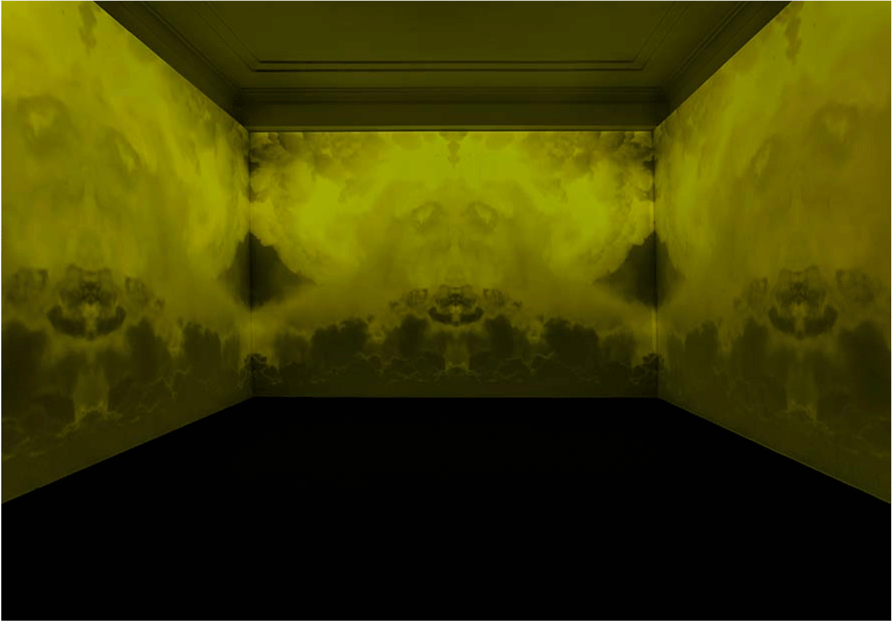
One of the most powerful installations within Spectre is Test of Faith, a three-panelled video installation, in which Despain mirrors declassified videos and images from the testing of the atomic bomb at the Nevada Test Site. Nearly three and a half minutes long, Test of Faith transplants viewers to 1945, into a darkness where mushroom clouds tower over the Nevada Desert. Test of Faith greatly reflects Despain’s family history, as the video plays to the layered soundtrack of the Mormon hymn “Love one Another,” a reference to American military’s appeal to Mormon settlers in the fallout regions within Despain’s home state Utah, to call for support for nuclear testing “under the guise of united patriotism.”
Nuclear war, the development of nuclear technology or the testing of nuclear weapons may seem extremely obscure to many, as most of us have only ever witnessed the disastrous results of nuclear technology through our high school history books. Cara Despain’s Specter calls attention to the fact that we are not as far removed from nuclear weapons as we may think. With several nations ramping up their nuclear arsenals, nuclear testing is conducted all around us, and most of the time it is unbeknownst to us. This is why Despain’s Specter exhibit is so important. Federal governments need to aim to promote United Nations Sustainable Goals like Peace, Justice, and Strong Institutions, because the active development and testing of weapons of mass destruction are something that no one on this planet should have to come into contact with, but at the very least, while they still exist, transparency regarding these weapons is a right the public must have.
Nuclear war has loomed over our heads since the dawn of the Manhattan Project, yet it is something we often forget about until global conflict arises, but Specter “provides an example of how clear and real the threat of nuclear conflict still is, while also reminding, or in some cases teaching, of the less visible, long-lasting devastation."
Cara Despain’s Specter exhibit is currently not showing, but most of her art pieces and more information on upcoming shows can be seen on her personal website: https://caradespain.com.
